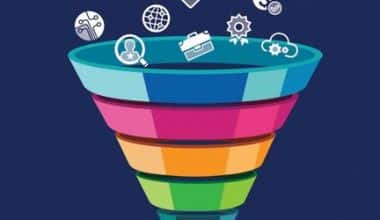Sales are the lifeblood of any business; without them, it would be difficult to function. As a result, one of the most important aspects of any sales director’s job is to keep accurate sales records. There are various methods for monitoring sales, and we will look at a few of them below. If you use a sales monitoring system, you have a plethora of important pearls at your disposal to help you fine-tune your sales process and reinvigorate your performance with little to no guesswork on your part.
What is Sales Performance?
Sales performance is a metric that measures how well a salesperson or sales team performs their duties. To put it another way, are they selling? And, if so, how much is it? This statistic should be measurable, which means it should be a specific number or percentage. Sales performance is used by sales managers to determine whether their team is on track to accomplish a predetermined sales goal. In many cases, simply establishing profitability or converting a prospect into a client is insufficient confirmation that everything is on track. To evaluate progress and find areas for improvement, sales performance should be viewed as a relative figure.
Why Monitoring Sales Performance is Important?
It’s tough to know what to do next if you don’t know where you’ve been. Monitoring sales performance allows everyone on the sales team to identify which strategies are working and which aren’t. By monitoring your team’s performance, you can make informed judgments. Rather than relying on guessing, you can fine-tune your game plan based on actual figures created and assessed in real-time. Furthermore, sales performance analyzes more than just total sales. You could measure a variety of sales metrics or key performance indicators (KPIs), such as:
- Source of sales
- Sales based on demographic
- Sales revenue per salesperson
- Recurring sales vs. new customers
- Total sales over a specified time period
- The average sales cycle length
- Revenue per customer on average
With these figures in hand, you can think of new approaches to boost motivation.
Why Monitoring Sales Performance Is Challenging When Working From Home?
The COVID-19 pandemic has resulted in a significant increase in the number of persons working from home. However, there has been an increase in activity in the WFH space for some years. Since 2005, the number of employees who work from home has increased by 173 percent.
According to studies, team members who are allowed to work from home are more productive and loyal, but there are some drawbacks. Getting up-to-date information on lead generation and closing rates may be easier when your entire staff is under one roof, but there are other options. If your team is operating remotely, you must devise a method for tracking and sharing everyone’s activity.
Working alone can be demotivating. There are even more diversions and excuses to postpone those follow-up calls until tomorrow. Such a mindset can have disastrous effects. That is why you must keep your entire team linked. Regularly send out updates. Make a huge fuss whenever someone achieves a goal. Let there be no doubt about it: this is everyone’s business. Create a leaderboard and keep it updated regularly to fuel the fires of competitiveness.
Strategies to enhance Sales Monitoring
Every company has a variety of strategies and instruments at its disposal to aid in the effective monitoring of sales operations. Here are a few of the most significant:
#1. Sales Strategy:
This is a document that lays out an annual sales plan and defines methods for achieving those sales. The sales strategy can be created in partnership with the marketing department, and it includes standards for adherence. For example, the promotions that will be presented and their validity dates, discounts that can be made for specific products to encourage sales, and so on.
#2. Goals and sales quotas:
Sales goals for the organization, as well as sales quotas for each agent, should be specified in writing in a document. This causes salespeople to concentrate their efforts on achieving these objectives, making it easier to meet target sales.
#3. Structure of the sales force:
Another factor that aids in improved sales monitoring is a well-defined sales force organization (no. of salespersons, sales areas, hierarchy, incentives, etc.).
#4. Portfolio of customers:
This comprises both existing and potential clients for the company. It should include information such as the company name, phone number, e-mail address, position, often purchased products, and so on.
#5. Order monitoring:
The organization must meticulously track orders submitted to ensure stock availability and to avoid issues that could impede the effectiveness of the sales process and negatively impact the client.
#6. Orders that have been paid and those that have yet to be paid:
This information is very crucial because it tells which orders have been paid and which are still owed. As a result, managing paid and due orders is a critical part of sales monitoring
Previously, all of these actions were enacted independently through distinct documents. However, there are currently sales monitoring management systems that allow all of the information listed above, as well as other information such as:
- Sales quantity per period: monitoring of transactions completed in different time periods (months, quarters, semiannually).
- Each salesperson’s effectiveness: control the amount of sales made by each agent, as well as the number of clients or prospective consumers he has gotten.
- Sales forecast: statistics or data on the amount of deals that each salesperson is predicted to close.
- Seller booked visits: an organizer that lists all of the upcoming visits for each sales representative.
Tips for Monitoring Sales Performance
So you understand why it is critical to track sales performance, but what is the simplest approach to do so?
#1. Make use of your CRM
Look for customer relationship management (CRM) software with a graphical dashboard. Salesforce and HubSpot help you track your funnel while also providing a bird’s-eye view of performance. This simple strategy keeps reps motivated and the entire team on track.
#2. Keep your progress in the spotlight.
When something is out of sight, it is out of mind. Display sales KPIs on a large TV screen as your second monitor. A large whiteboard is a less technologically advanced choice, but it works well in a pinch. Update it as deals flow through your pipeline, or use it to compare everyone on your team’s progress.
#3. Use Softwares to automate tasks.
A project management application or software can help you communicate more effectively. First, connect the software to your CRM. Then, build a dedicated channel on the software and all closed/won deals will be automatically pulled in. You are increasing the visibility of the sales staff while also funneling data to the entire firm.
#4. Traditional one-on-ones
Make time to meet with your management frequently if you are a salesperson. If you’re a sales manager, the same concept applies, but in reverse. Use this opportunity to go over previous calls and identify any hurdles that may be standing in your way. What is the goal? To plan out how to close the business in your pipeline and bring in more prospects – over and over.
Top Sales KPIs for Monitoring Sales Performance
#1. New Prospects or Leads
It’s a simple but critical KPI that must be monitored regularly. Tracking fresh leads reveals:
- How many leads are you getting
- Where are your leads coming from
- When should you concentrate your advertising efforts?
- How your sales team contributes to the company’s growth
- Who is meeting their quota
- The proportion of your team that meets their quota
- If your quota is very high or excessively low
A sales dashboard is a highly effective approach to keep track of fresh leads (and many other KPIs). It monitors opportunities as they come in by using real-time data and metrics from your company’s customer databases — Shopify, Infusionsoft, Salesforce, and so on. No more sifting through reams of data; streamline and automate this task to save time and money.
#2. Locational Sales Volume
Monitoring Sales Volume by Location (in-store or online) is the way to go if you want to know where the demand for your product is strongest and lowest.
Comparing sales figures across different sites helps to focus your team’s efforts. Your findings, for example, could indicate where to launch advertisements or which regions would benefit from new product developments. As a result, you may boost sales by focusing on the best activities in the correct places.
Monitoring this sales KPI, like monitoring new opportunities, is considerably easier with a dashboard that can combine all of your data in one location. As a result, you can quickly compare Sales Volume by Location and share it with your team for key insights.
#3. Lead Conversion Rate
The all-important question: how many leads turn into sales? Monitoring this sales metric will assist you in the following ways:
- evaluate the efficacy of your pitches
- improve your sales process to attract more qualified leads.
- learn more about prospects who convert
- build a tried-and-true strategy for future consumer acquisition
- choose your ideal customers
To calculate Lead Conversion Rate, select a period and run a report on leads generated within that period. Then, run a report on leads converted during that period. Then, to calculate your conversion rate, divide the leads converted by the leads created. Depending on the CRM software you use, how you execute this process may differ.
#4. Actual Revenue vs. Projected Revenue
This is essentially two important sales KPIs rolled into one. Actual vs. Expected Revenue indicates how successful (or unsuccessful) your firm is by identifying how near you are to hitting your forecasted revenue.
If you realize that your predicted revenue is significantly lower than your actual sales, it is time to act. Examine more specific sales KPIs to determine where losses may arise in your forecasting process or sales cycle.
Monitoring this sales KPI necessitates establishing a precise time frame for reviewing your revenue stream. This might be year over year, but it could also be quarterly, monthly, or weekly. Whatever timetable you use, you must keep track of how much revenue you expect vs. how much you earn. Otherwise, all of your company decisions will be in vain.
#5. Length of the Sales Cycle
Monitoring Sales Cycle Length for individual reps demonstrates a rep’s effectiveness in contrast to their colleagues. This enables you to provide further training and goal setting for the appropriate staff to improve their performance.
However, a short sales cycle is not always beneficial to business. For example, you might discover that your shortest sales cycle results in disappointed consumers. In this scenario, you might think about how prolonging the sales cycle can increase client satisfaction.
Using a dashboard to track Sales Cycle Length means that all of the information you require is in one place and easily accessible. This allows you to swiftly get key insights and communicate what you’ve understandably learned with the team.
#6. Employee Satisfaction
Work-related stress is often underestimated, yet it is crucial, as the World Health Organization has declared it the health epidemic of the twenty-first century.
Poor employee well-being is detrimental to both the individual and the business. These are the folks that will be communicating and working with your customers and potential prospects daily. They are the public face of the items and services you want to offer, so keeping them happy is in your best interests.
The good news is that sales KPIs like employee motivation and satisfaction are both measurable and relevant.
Feedback is one method of gauging employee happiness. You may ask your staff to rate their job satisfaction on a scale of 1 to 10, and then follow up with qualifying questions to determine what makes them dissatisfied or happy. When these results are compared to your goals, they will provide a picture of your overall employee happiness while identifying areas where you need to work to improve your employees’ well-being.
#7. Competitors Pricing
An understanding of your competitors’ pricing is a valuable advantage for a competitive strategy. For example, if you notice that your rates are nearly identical, you may execute a price-matching approach to ensure your consumers get the greatest offers, giving your company a competitive advantage.
Price monitoring can be carried out with the help of a web scraping tool or a parser. They enable you to collect live pricing data at predetermined intervals. All you have to do is identify your competitors and the products that will provide the most data points. Then, decide how frequently you want to check competition rates for scraping.
Next, collect all of the relevant product URLs and import them into your scrape or parser program. Then you’re ready to evaluate the data to assist you in achieving that pricing sweet spot that will stimulate sales and client loyalty.
#8. Customer Involvement (after the sale)
Increase consumer loyalty and keep them returning for more. This can be accomplished by monitoring an eye on the Sales Customer Engagement KPI.
Metrics for customer involvement could include:
- Participation in social activities (number of likes, shares, reactions, retweets, etc.)
- Email participation (open rates, click-through rates, etc.)
- It’s activity time! (the total time a customer spends interacting with your service or brand)
- The frequency of visits (how often a customer uses your service or visits your website)
Collaborating with Marketing will assist you in gathering and comprehending this data. These metrics assist you in becoming acquainted with the types of customers that purchase your items or services. As a result, you can constantly improve your offers and engagement techniques to provide your clients with exactly what they desire.
#9. Customer Lifetime Value (CLV)
Customer lifetime value (CLV) is a critical measure for developing sales teams to monitor. It informs a company how much revenue it may expect from a single customer as a result of its business relationship.
The longer a customer remains a customer of a company, the higher their lifetime value rises. This metric can be used to determine which client segments are the most valuable to the firm.
What Is a Sales Monitoring System?
Every process has a plethora of moving components, including lead generation, qualification, and scoring, sales forecasting, the many stages of the sales funnel, numerous follow-up, and plenty of nurturing at every stage.
Consider it a bird’s-eye view to assist you in monitoring and facilitating the actions of your sales organization. The sales monitoring system tracks lead as they progress through the sales funnel, notifies sales reps to follow up or deliver specific pieces of content based on the prospect’s buying stage, and records engagement metrics.
This allows sales teams to focus less on manual duties and more on what they do best—sell.
The Benefits of Using a Sales Monitoring System in Your Business
The key benefit of having a sales monitoring system is that it allows you to obtain visibility into your sales process. Because sales are the lifeblood of every business, it’s vital to always know what’s in your sales funnel and how much money you can expect from your present opportunities.
But it does not stop there. You can also increase your sales performance by taking advantage of the following benefits:
#1. Processes that can be repeated
When you have a process in place, you are setting yourself up for repeatable success. Processes maintain consistency for certain tasks, which aids in the prevention of essential details sliding through the cracks. This guarantees that each client receives the attention they deserve, ensuring that you never miss an opportunity.
#2. Simplified Operation
Using a systematized approach to sales improves the efficiency of your overall organization. To establish a seamless experience for every prospect, sales agents can spend less time thinking about their next time and more time on revenue-generating activities.
#3. Data Gathering for Better Decisions
When a sales monitoring system is properly installed, they collect all of the data you need to make informed decisions for your company. Data provides more insight into what is and is not working in your sales process, allowing you to alter and enhance as you go.
#4. Increase Salesperson effectiveness :
Sales management systems influence salesperson effectiveness because greater process monitoring makes jobs easier and allows them to sell more.
#5. Developing a work standard:
This technology enables the development of a consistent style of working for all sales agents. They will all follow the same working principles, which will be recorded in the sales management system, resulting in better-structured information and higher production.
#6. Creating reports:
These systems have an intriguing feature in that they may provide reports that include crucial information about sales operations to improve future visits or sales prospects.
As a result, businesses must install a system that assists them in managing the many phases of a sales process, as well as the capacity to acquire data and statistics on it to better in the future.
Sales Monitoring System Must-Have Features
It’s simple to understand why sales monitoring systems are so useful to the businesses that utilize them: the average return on investment for CRM and sales monitoring is almost $8.71 for every dollar spent!
So, what should you look for in a sales monitoring system to achieve such a high ROI?
Let’s have a look at some of the important characteristics of an effective sales monitoring system:
#1. Automated Sales
Sales monitoring systems should be implemented before sales personnel are involved in the process. Sales reps can spend less time on time-consuming duties and more time guiding prospects to desirable decisions by automating key tasks such as lead qualification and task assignment.
#2. Visual Sales Process
Sales monitoring is more than just making the sales rep’s job simpler. It is also about providing businesses with improved visibility into the real-time sales process. Sales monitoring solutions should visualize all areas of your sales funnel, from lead creation and qualification through follow-ups and revenue forecasting.
#3. Capabilities for Remote Selling
A good sales monitoring system should provide visibility into remote field personnel as well. Companies should constantly be able to observe what’s going on in the field and communicate with reps.
Top 10 Sales Monitoring Software
The basic line is that if you track your sales using spreadsheets or, God forbid, pen and paper, you are missing out on critical information that can help your sales staff succeed.
To increase efficiency, a smart salesman requires good sales monitoring software that can crunch all of the critical sales indicators and generate relevant intel.
Here are our top ten sales monitoring software recommendations, sorted alphabetically.
#1. Pipedrive
One excellent feature of Pipedrive is its “deal rotting,” which assists the sales team in detecting missed meetings or opportunities, which is critical for identifying areas for improvement.
Pipedrive also provides a one-of-a-kind sales reporting dashboard that deconstructs key performance indicators. It enables you to immediately identify your top performers as well as which members of your sales team need to step up their game.
Pipedrive’s major feature is its “sales mentor,” which is driven by artificial intelligence and provides individualized advice to increase your sales performance.
#2. Insightly
Custom dashboards are a significant part of what makes Insightly interesting to sellers. These dashboards are effective at breaking down the data you want to track and presenting it in a visual style, making it simple to draw actionable conclusions about how the sales team is performing.
Insightly also includes a business intelligence component that can assist you in creating your data visualizations.
The key feature of Insightly:
Insightly provides sophisticated data tools to deliver a complete view of your clients, including any personal information that might help you discover their needs and enhance your sales conversion rate.
#3. HubSpot CRM
HubSpot CRM offers a robust dashboard that displays real-time sales information, keeping your sales team up to date on the progress of each lead in the sales pipeline. You may track deal flow depending on performance to see how the team is performing concerning its quotas.
HubSpot also provides activity logging, allowing you to track each action taken about each lead in real-time.
HubSpot CRM distinguishes itself by extending beyond sales with its marketing hub, which provides an all-in-one solution for running entire inbound marketing campaigns and improving the leads you send your sales team.
#4. Agile CRM
Agile CRM actively monitors customer support metrics such as tickets closed and average time to resolve issues, and the sales dashboard can be configured to display relevant indicators.
You may use this information to develop a strategy to increase response times, so enhancing customer happiness and, as a result, retention. This can lead to opportunities for upselling and perhaps new customers.
Agile CRM’s contact management tool consolidates all of your contacts in one location, and all actionable data is updated in real-time, allowing you to see where you stand with all of your potential clients at any moment.
#5. Bitrix24
This CRM provides an excellent job of tracking marketing costs, allowing you to determine which initiatives are effective and which should be discontinued. It will also track keywords and channels to help you save money on marketing.
Bitrix24 also provides several sales monitoring tools to help users increase conversion rates and see how the team is performing in terms of conversion rates and quotas.
Bitrix24’s core feature is collaboration, including an activity stream, a group chat, shared calendars and workgroups, and other features to keep everyone on the same page.
#6. Close CRM.
Close features robust reporting options that allow you to monitor important performance factors. A single dashboard gives your sales team a visible representation of key KPIs, allowing them to stay on track and meet their goals.
It also breaks down how each team member performs based on the criteria you choose to track. You have complete control over the dashboard, allowing it to perform in the way that is most beneficial to your organization.
Close CRM’s major feature:
With one-click calling and call automation, Close CRM makes contacting new clients easier, making your team much more efficient in making enough touchpoints to get as many customers down the sales funnel as feasible.
#7. Salesforce CRM
Salesforce includes powerful analytics features that allow you to create return-on-investment (ROI) goals and track every part of your marketing campaign to reduce your cost-per-acquisition statistics.
Its sales monitoring tools enable you to forecast outcomes and make recommendations on how to strengthen your sales staff.
Their analytics technology is powered by artificial intelligence and can connect data from numerous sources.
Salesforce CRM important feature:
With sophisticated customer care software, Salesforce aims to go beyond sales and generate happy customers, ensuring repeat customers and enhancing your brand’s reputation.
#8. SugarCRM
SugarCRM performs an excellent job of establishing thorough customer profiles, allowing you to track every data about a potential customer.
You may chart their journey, from their initial interaction to a customer satisfaction survey after they make a purchase decision.
SugarCRM summarizes your performance and provides datasheets and reports to aid in sales forecasting and identifying areas for growth.
SugarCRM’s major feature:
SugarCRM can crunch a massive amount of data on your customers to generate patterns and predictions that you can use to increase your bottom line.
#9. Vtiger Sales CRM
Vtiger provides an easy approach to crunch data, for example, by allowing you to fill out a brief form and generate a monthly sales report.
You can also share these reports with the team and plan future reports to be automatically populated. The platform allows you to track a variety of indicators and use filters to gather even more information.
The key feature of Vtiger Sales CRM:
Vtiger includes capabilities that allow you to automatically allocate leads to specific members of your sales force based on factors such as availability, location, and transaction size.
#10. Zoho CRM
Zoho CRM provides powerful analytics to help you track the whole sales cycle, from lead creation to deal closure.
You may build customized dashboards using a variety of widgets to generate charts, funnels, and target meters.
This software combines CRM data and generates thorough reports displaying several patterns that might assist you in increasing the effectiveness of your sales staff. You can also share and export these dashboards with the team or anybody else who needs them.
The key feature of Zoho CRM:
Zoho CRM automates your workflow, so every time an action is performed on a lead, you don’t need to log in and punch in the information – it’s done for you, freeing up time for additional sales calls.
What do you have in your sales monitoring system?
Creating a sales monitoring system can be one of the most beneficial decisions you can make for your sales organization. Sales monitoring, like sales, is made up of multiple moving pieces that must all work together to reach your unique goals.
Contact us today to schedule a consultation on how to implement an effective, long-term sales monitoring system in your organization and begin generating better sales from the ground up.
How Do You Keep Track of Sales Goals?
Using a Sales Leaderboard and projecting it on television is one of the greatest ways to keep track of sales performance in comparison to goals. Consider creating a Salesforce dashboard as well.
What Do Sales Reporting and Monitoring Entail?
All the sales activities and performance metrics are compiled by a sales monitoring system into simple reports. These can be provided to other teams and departments operating within the company so they can comprehend how their labor is transformed into sales figures.
What Is a System for Tracking Sales?
A software program or networked collection of programs that track and handle sales data is known as a sales monitoring system. It can collect and combine data from a variety of sources and store sales information about your clients and goods.
How Are Sales KPIs Tracked?
You can calculate this KPI by dividing the number of leads your campaign is producing by the opportunity value, or by dividing your average value per victory by your typical lead-to-win ratio.
What Is the Most Effective Approach to Tracking Sales?
We advise using a combined sales and cash receipts journal to make your bookkeeping easier. Your software should be able to accommodate a journal that combines sales and cash receipts, which allows you to record all sales (cash and credit) and all cash receipts, including the collection of accounts receivable, in one journal.
Monitoring Sales FAQ’s
How do you monitor sales targets?
Using a Sales Leaderboard and showing it on television is one of the finest ways to monitor sales performance versus targets.
What are sales strategies?
A sales strategy is a documented plan for positioning and selling your product or service to qualified buyers in a way that distinguishes your solution from your competitors.
What is your sales target?
A sales target is the number of products that must be sold in order to generate the specified profit. Well-defined sales targets help sales teams thrive. Sales targets enable you and your sales team to continue measuring, challenging, and improving sales performance.






